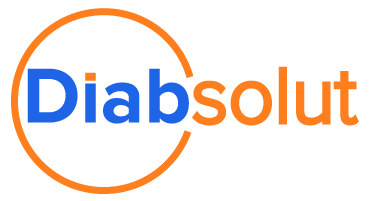Covid-19: Incremental Field Service Areas of Focus
Author: Derek Koyama
 “Have you thought of everything?”
“Have you thought of everything?”
With more and more people being asked, or mandated, to stay at home the focus on service availability and service consistency inside homes and businesses will be significantly increased.
Trying to balance all the ongoing pressures of customer safety, technician safety, and ongoing business viability becomes a challenge.
There is no ‘best practice’, no ‘historical equivalent’ in our current technological age. We can look at other countries for some ideas however things have changed and escalated so rapidly it is difficult to determine specific tactical best practice Field Service solutions.
With so much happening at such a rapid pace – we are all running at more than full speed. That pressure, both at home and work, can result in ‘tunnel vision’ which could result in effective but not expansive solutions.
As we work with our customers, partners, and employees through this challenging period we have started to compile a list of items that we are experiencing in the hopes that these items provoke incremental thoughts in your team, department, division, or company. Our goal is to share as much information as possible to ensure that we as a Field Service Community band together for the greater common good.
While not an all-encompassing list, this set of items is intended to drive incremental thought(s) as we sift through the large volume of data and requests.
We have initially categorized the items into four core categories:
- Technician/Customer Communication
- Safety
- Flexibility
- Recovery
Technician/Customer Communication
Things are changing so quickly that it is hard to keep up with the high volume of information, new rules, and regulations. Almost every day at the federal, state, provincial, county, and city levels something is changing resulting in business and personal practice changes. Traditionally information has been distributed through multiple delivery mechanisms however ‘Social Distancing’ has limited these delivery options.
- Things such as Tailgates, Morning Scrums, and Onsite Manager Visits are now off the table or limited
- Customers are wanting more information on the technician coming to their homes and information on what safety mechanisms have been put into place to protect themselves
- Completeness and accuracy of self-installation and self-help processes, and documentation become even more important. Have you recently reviewed your existing documentation for customers and thought about what else can be made available?
- Technicians historically have been able to ask for an onsite “assist” by a senior technician or peer. Have you looked at how to manage technician assist requests (i.e. updated knowledge base, video call with seniors, augmented reality, etc.)
- Information advances so quickly and some items may be critical to your technician’s safety. How do you ensure critical information is consumed by your field staff?
- Forced safety form at the start of a shift
- Mandatory acknowledgment of information
- Updated system workflow to cease work until message confirmed, unique messages based upon the location of the job
-
- Updating system messages to the organization and field to remind them of the need to clean hands frequently
- Updating messaging/popups on orders where an address may contain quarantined individuals
- Message security. With the rush to ensure information is pushed as quickly as possible to field staff, it is important to ensure the method of communication is as secure as some of your customer data that is transmitted.
Safety
Safety has historically played a significant role in managing field workforces. In our new reality “Social Distancing” has generated a whole new set of scenarios to think about.
Things such as:
- Updating Status Flows to allow technicians to ‘reject’ work while onsite
- Managing potential “Right to Refuse” situations. In cases where technicians do not feel safe once entering the home
- New disposition codes for rejection or cancelation
- Creating unique skills for people with the training/PPE to work on critical services inside impacted homes
- Technicians should no longer go to the warehouse or vehicle depot at the same time (i.e. morning)
- How to use systems to schedule warehouse visits and vehicle pickups to limit contact with others
- How to use drop shipping or couriers to deliver needed materials to technician homes, site,s or customer locations
- Can your technicians take their trucks home? If not, is there a place for them to park the truck that is safe and limits contact?
- Road crossings, manhole entries, some temp lines, etc. generally require multiple technicians for safety reasons
- Have you reviewed your day-to-day safety protocols to ensure they adhere to “Social Distancing” guidelines?
- Encompass new procedures for multi-person jobs and crew work.
- Is it possible to split the work into a single person linked/dependent jobs?
- Is it possible to lengthen the duration of the job if only one person is assigned?
Flexibility
Being flexible, fast, and dynamic in all areas of Field Operations has become a necessity. While historically enhanced processes or system changes need to be vetted, documented, approved and tested; we are seeing system and process changes needing to be fast-tracked.
- Do you have a place to capture all the changes so that documentation can be updated later?
- Do you have system tools in place that enable fast implementation of changes, and configuration management to ensure consistency of environments (i.e. Xoom Configuration Management Tool)?
- Do the people in the approval and implementation chain clearly understand the priority?
- Do you have a solid process to receive inputs from both office and field staff for process changes?
No one wants to make a decision that could negatively impact technician safety however in several cases not making a timely decision results in a similar result.
Recovery
This pandemic will end. When it does, there will be a large backlog of work. Demand for all service, installation, and maintenance work that was deferred will be high. Customers and Businesses will all want to get back to ‘normal’. How will you handle the volume of work?
- How will you prioritize work when back to normal? Do you want to?
- Do your systems and processes have the capacity to handle the incremental volume of work?
- Do your systems and processes manage the distribution of work to 3rd parties effectively?
- Can your system create and distribute planned maintenance work efficiently with all other work?
We at Diabsolut, as part of the Field Service community, hope that these areas of insight provide every person, department, customer, and client with some additional areas of focus to ensure that we as a community of passionate field service experts can come out just as successful as before this period in time.
Search
Trending Topics
- E13: What Is Artificial Intelligence and Why Is It Beneficial for You? – Java With Sugar Podcast
- AI Ethics: What Is It and Why Does It Matter?
- 3 Tips to Improve Your Strategy and ROI When Selecting SaaS Solutions
- E12: Revenue-Focused Trends in Field Service – Java With Sugar Podcast
- E11: Synergize Field Service Management with Revenue Solutions – Java With Sugar Podcast
- E10: What Is Monetizing Field Service – Java With Sugar Podcast
- Mobile Field Service Solution Optimization: Healthy vs. Good Enough
- Salesforce Data Infrastructure: A Hyperforce Quick Guide
- A Quick Guide to AI, Generative AI, and Salesforce AI Cloud
- E09: Current PSA Trends: What the Future Holds – Java With Sugar Podcast
